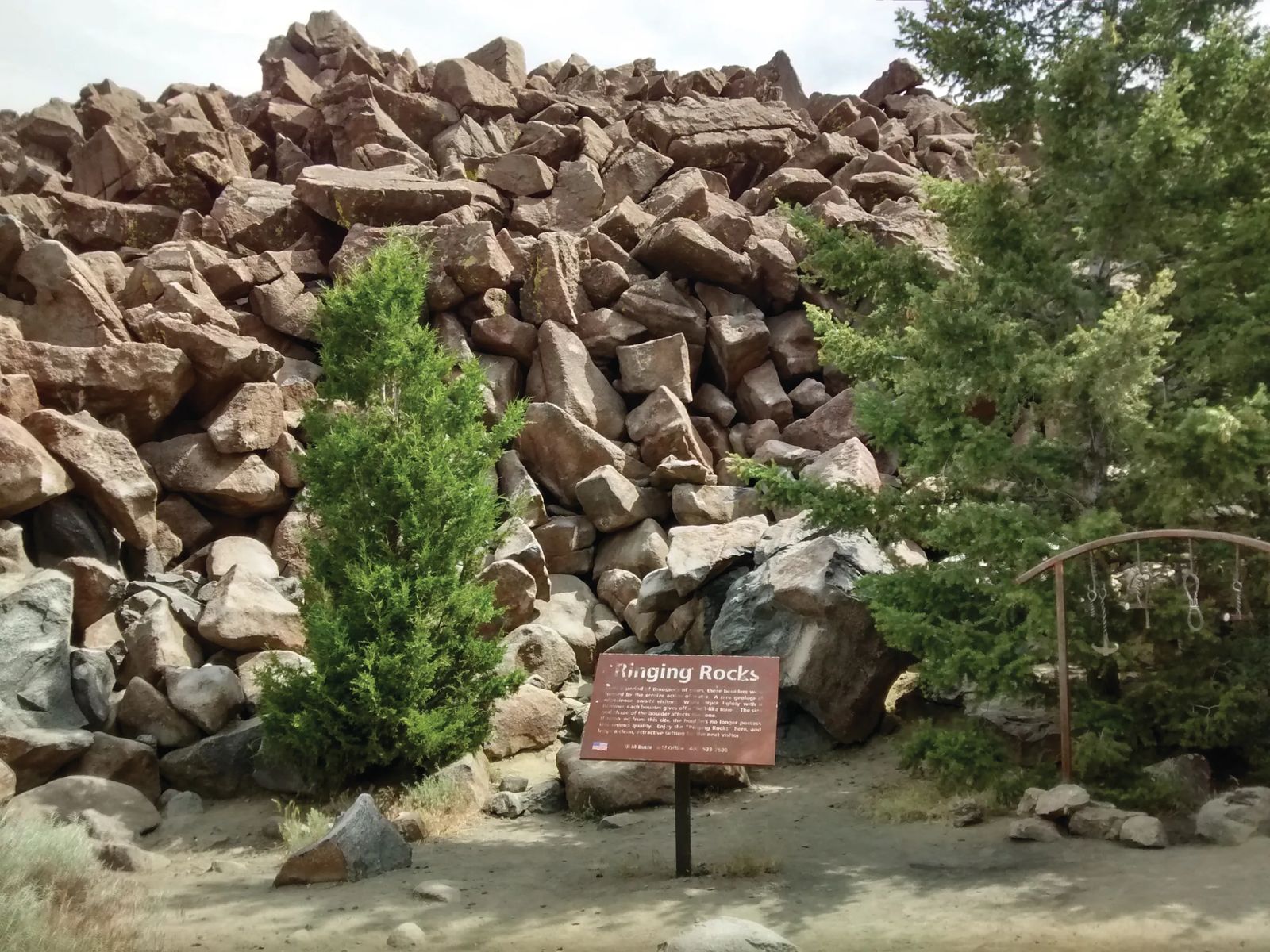
STEAM Spotlight: Ringing Rocks
June 2020 | by stephanie hobby
Up a rough and rocky road off I-90 about 18 miles east of Butte, a fascinating discovery awaits those willing to make the often-treacherous drive. Rising from a small dusty parking lot is a roughly 1200 square foot boulder field, which, to most people, looks like an ordinary pile of big rocks. But if you take a hammer to them, you’ll hear the distinct sound of a train whistle. Or a bell. Or a chime.
They are known as Montana’s Ringing Rocks, and over the years, they have intrigued both scientists and casual observers alike. There are only a handful of these sites around the world; the United States’ other notable location is in Pennsylvania. “But I have it on good authority that they don’t ring as nicely as ours do,” joked Dr. Colleen Elliott, research professor in geologic mapping at Montana Tech and the Montana Bureau of Mines and Geology.
Dr. Elliott, who has worked all over Europe and Australia, has long been fascinated by the musical sounds of the rocks and the mystery behind the phenomena. As far as she knows, there has never been a global study of the formations to definitively say why they ring, but she has a few theories.
One common denominator is how the rocks are arranged. Each of these unique sites is made of piles of boulders, leading to the idea that the way the stones are stacked against each other allows them to resonate when hit. It's been said that if the rocks are moved, they lose their musical ability and make a "thud" like any other rock.
However, there’s another determining factor, and that’s the way the rocks themselves form. While the sites around the world aren’t all made of the same kinds of rocks, most of them have been exposed to heat and pressure. Much like a fiery kiln changes clay into ceramics, rocks can undergo a similar process in the earth’s crust.
Dr. Elliott believes the rocks all came from a melt from inside the earth's crust, then crystalized, and were heated again later. Butte sits on a boulder mass that came after the ringing rocks formation and could have been what caused the rocks to reheat, but she emphasizes that this theory has not been tested. The formation in Montana is made of igneous rock, meaning it came from cooled molten material, and is rich in iron and magnesium, so it has less quartz than granite; the Pennsylvania site has a similar mineral composition. There is likely something about the internal structure of these rocks that make them hard, but also able to resonate when struck.
The other big question is how the boulders got there. A felsenmeer, or boulder field, is the kind of rock pile that forms through long weathering patterns, with lots of freezes and thaws. During that cycle, when water seeps into the rocks' cracks and then freezes, it expands, further fracturing the rock. If that process goes on long enough, a jumbled pile of boulders remains. Felsenmeers are very common in areas where glaciers once were. While there's no evidence that there was once a glacier there, there was one very close by, so that theory is plausible.
The other idea is that the boulder field was actually a large outcrop of monzonite, a type of igneous rock that eroded over time, and boulders dropped off of it. There is evidence for both at Montana’s Ringing Rocks. Dr. Elliott’s husband is also a geology professor at Montana Tech. “He and I have made many trips out there, and we argue viciously about what we think is the right theory. It’s just fascinating,” she laughed.
While the surefire reason behind the rocks’ melodious sounds might remain elusive for now, exploring the boulder pile is a great place to play with geology. “You find ringing rocks all over the pile. Some ring beautifully, and others just thud," Dr. Elliott said. "I would encourage people to range a little more widely than just beside the parking lot.”
Without getting lost, she encourages visitors to bang on different rocks and ask lots of questions. If you keep going to the east from the first pile of boulders, you’ll find other outcrops, and you can ask yourself if they ring or not. (Spoiler alert: they mostly just thud.)
"So, what's the difference? If you can get your eye into the rock, you can see that different minerals make up those rocks, and they have different textures, and the boulders are maybe distributed differently. Everybody that goes there can be a scientist," she said, adding that geologists use all their senses to understand rock composition. Some rocks in Montana have a sulfur or petroleum smell because they contain the fossils of a lot of micro-organisms. And surprisingly, every once in a while, you'll come across rocks that sound different.
“I hope people will go there because, for one thing, I love it, and also I think it really is a special place and very interesting.”
Originally printed in the June 2020 issue of Simply Local Magazine
Never miss an issue, check out SLM's digital editions here!





